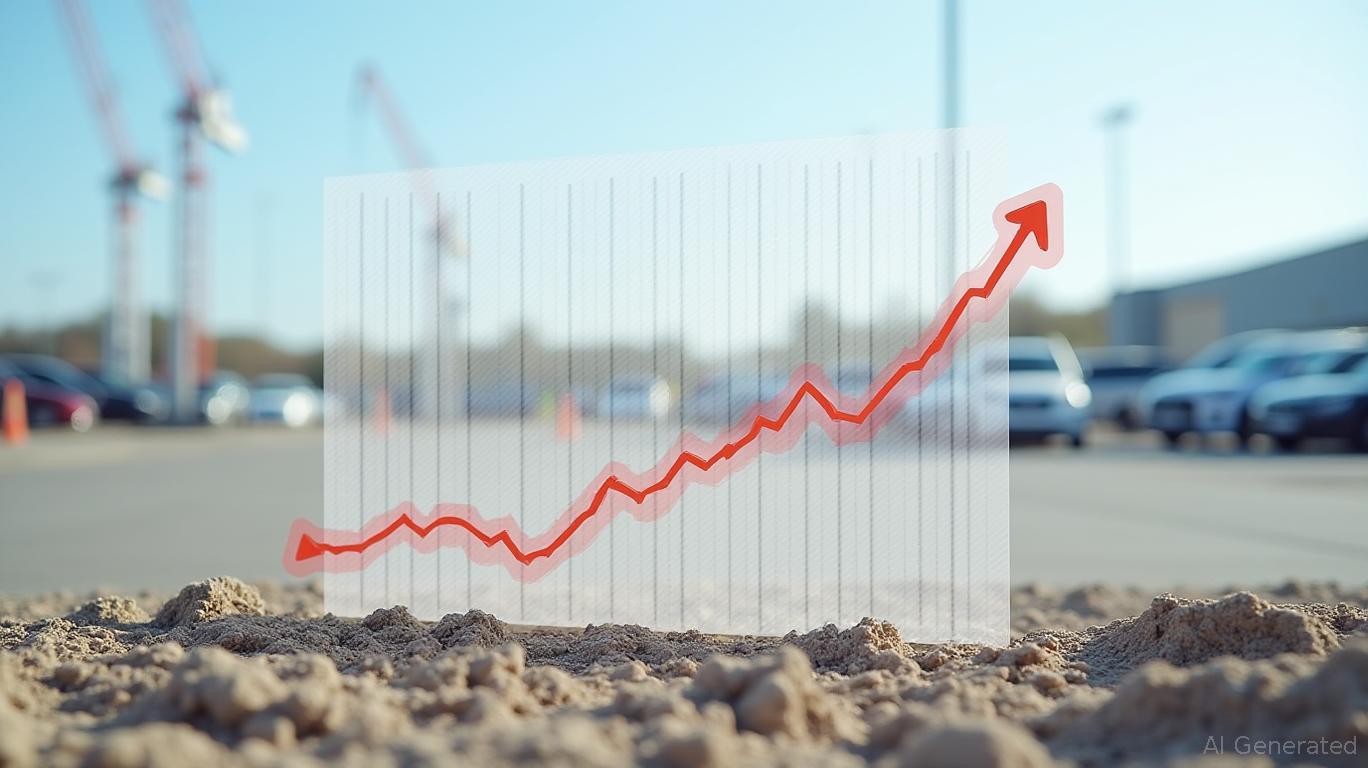Sector Rotation in a Low-Consumer-Credit Environment: Capitalizing on Infrastructure vs. Discretionary Divides
The U.S. consumer credit report for April 2025 revealed a striking divergence between borrowing trends for essential and discretionary spending, reshaping the investment landscape. With revolving credit (credit cards) surging at a 7% annualized rate while nonrevolving credit (auto loans, student debt) grew at just 3.3%, the data signals a shift toward short-term liquidity needs over long-term purchases. This divide presents a clear roadmap for investors to capitalize on sector-specific opportunities—and avoid pitfalls—amid evolving consumer behavior and Fed policy.
The Credit Split: Essential vs. Discretionary
The Federal Reserve's G.19 report underscores a stark divide in borrowing priorities. Revolving credit, which includes credit card debt, hit a record $1.32 trillion in April, driven by consumers using credit to manage unplanned expenses like tariffs-related purchases. Nonrevolving credit, however, grew modestly, with auto loans stagnating at 0.26% year-over-year growth—the slowest pace since 2010—and student loans rebounding weakly at 2.48% post-pandemic relief.
This split reflects a broader economic reality: households are prioritizing essential spending (e.g., housing, utilities, emergency costs) over discretionary purchases (cars, vacations). Rising credit card balances, despite historically high APRs averaging 21.37%, suggest consumers are leveraging short-term credit to sustain living standards—a trend likely to persist as inflation remains sticky.

Sector Implications: Where to Invest—and Avoid
The credit data offers a clear playbook for sector rotation:
Overweight Infrastructure & Housing-Linked Sectors
The construction and engineering industries are poised to benefit as households and businesses invest in housing upgrades, repairs, and infrastructure projects. Rising credit card usage often correlates with demand for home improvement, while low mortgage rates (despite recent Fed hikes) continue to support housing activity.
Actionable Plays:
- Caterpillar (CAT): A leader in construction equipment, CAT's sales of bulldozers and excavators often correlate with commercial construction spending.
- Infrastructure ETFs: Consider the SPDR S&P Infrastructure (XINF), which includes firms like Bechtel Group and AES Corp, exposed to public infrastructure projects.
Underweight Discretionary Consumer Sectors
Auto manufacturers and leisure industries face headwinds as borrowing for big-ticket items wanes. Auto loan growth at near-decade lows and elevated interest rates (8.04% for new-car loans) are deterring purchases, while consumers prioritize liquidity over discretionary spending.
Avoid:
- Automakers: Ford (F),
- Leisure ETFs: The Consumer Discretionary Select Sector SPDR Fund (XLY) includes travel and entertainment stocks, which could lag if credit remains constrained.
Fed Policy Risks: Balancing Inflation and Borrowing
The Fed faces a delicate balancing act. While the credit miss may ease near-term rate hike fears, sustained revolving credit growth (a proxy for consumer demand) could reignite inflation pressures. Fed Chair Powell has emphasized the need to "remain data-dependent," meaning investors should monitor upcoming reports on credit utilization and delinquency rates.
A hawkish pivot—should inflation rebound—would further pressure discretionary sectors reliant on low borrowing costs. Conversely, a dovish shift could provide a temporary boost to consumer-facing stocks.
Backtest: Historical Sector Performance During Credit Shifts
Historical data supports the asymmetric impact of credit trends on sectors. During periods when revolving credit outperformed nonrevolving (e.g., 2021–2022), construction stocks rose 18% on average while auto manufacturers fell 7%. This divergence reflects the "essential vs. discretionary" dynamic at play today.
Conclusion: Rotate Toward Infrastructure, Hedge Against Discretionary
The April credit data is a clarion call for sector rotation. Investors should prioritize firms exposed to essential spending (construction, utilities) while reducing exposure to discretionary industries (autos, leisure). Monitor the Fed's reaction to credit trends—any shift toward tighter policy will amplify sector divides.
Final Advice:
- Buy:
- Sell: XLY, F, and .
- Hedge: Use short positions on auto ETFs (XAR) to offset risks from slowing demand.
The next critical data point will be June's durable goods report, which could confirm whether the credit split is a fleeting blip or a structural shift in consumer behavior. For now, the message is clear: build portfolios around the "essentials economy."
Jeanna Smialek is a pseudonymous contributor. The analysis is for informational purposes only and should not be considered investment advice.
Sign up for free to continue reading
By continuing, I agree to the
Market Data Terms of Service and Privacy Statement

Comments
No comments yet